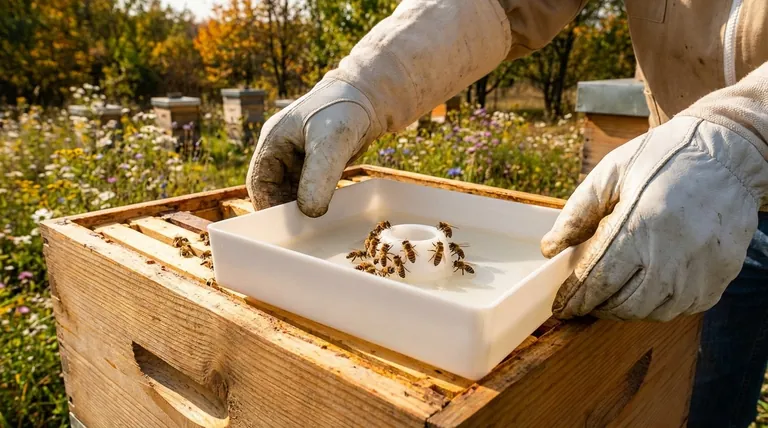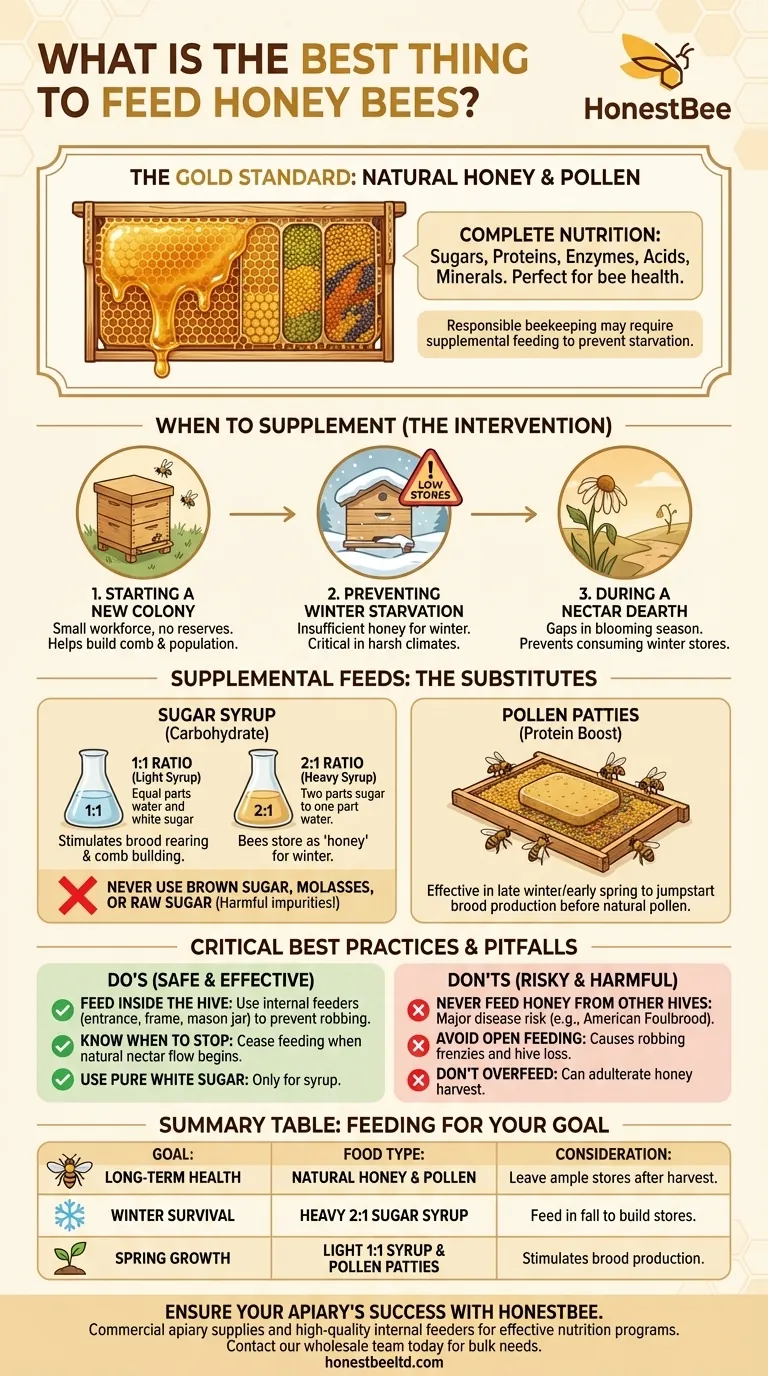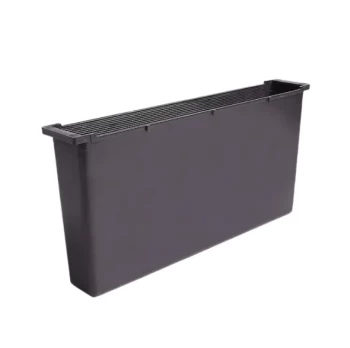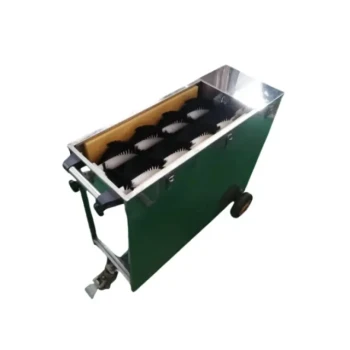The absolute best food for honey bees is their own honey and pollen. This natural diet provides the complete and complex nutrition they have evolved to thrive on, containing not just sugars and proteins, but also essential enzymes, acids, and minerals. When beekeepers harvest honey, they must ensure enough is left for the bees to survive, especially through long winters or periods of nectar scarcity.
While a bee's natural diet of honey and pollen is nutritionally perfect, responsible beekeeping often requires supplemental feeding with sugar syrup or pollen substitutes to prevent starvation and ensure colony survival during critical periods.

Why Natural Forage is Irreplaceable
The health of a honey bee colony is directly tied to the quality of its diet. Honey and pollen are not just food; they are a complex nutritional system.
Honey: The Energy Source
Honey is the primary source of carbohydrates for bees, providing the energy needed for all in-hive activities. This includes flying, wax production, heating the cluster in winter, and raising brood.
It is more than just sugar. Honey contains enzymes, organic acids, and trace minerals that are not present in processed sugar substitutes.
Pollen: The Source of Life
Pollen is the bees' only natural source of protein. It also provides essential fats (lipids), vitamins, and minerals.
This protein is critical for a queen to lay eggs and for nurse bees to produce royal jelly to feed the larvae. A lack of pollen, known as a "pollen dearth," will quickly halt brood rearing and weaken the colony.
When Supplemental Feeding Becomes Necessary
While honey and pollen are ideal, a beekeeper must intervene with feeding in specific situations to ensure the colony's survival and strength.
Starting a New Colony
Newly installed packages or nucs have no food reserves and a small workforce. Feeding a light sugar syrup helps them draw out comb and build up their population and stores quickly.
Preventing Winter Starvation
A colony's primary job in the fall is to store enough honey to survive the winter. If their stores are insufficient due to a poor nectar flow or over-harvesting, the beekeeper must feed a heavy syrup to prevent them from starving.
This is especially critical in climates with long, harsh winters, where bees may be clustered for months without the ability to forage.
During a Nectar Dearth
Sometimes there are gaps in the blooming season, creating a "nectar dearth" where there is little to no food available. Feeding during these periods can prevent the colony from consuming all its winter stores prematurely.
Understanding Supplemental Feeds
When you must feed, it is crucial to use the right substitute at the right time.
Sugar Syrup: The Standard Substitute
The most common supplemental feed is a simple syrup made from plain white table sugar and water. Never use brown sugar, molasses, or raw sugar, as their impurities are indigestible and harmful to bees.
The ratio of sugar to water depends on your goal. A 1:1 ratio (by weight or volume) mimics a light nectar flow and stimulates the queen to lay eggs. A 2:1 ratio of sugar to water creates a thick syrup that bees are more likely to store as "honey" for winter.
Pollen Patties: The Protein Boost
Pollen patties are a commercially available or homemade substitute for natural pollen. They are most effective when fed in late winter or early spring to stimulate brood rearing before natural pollen becomes available.
Common Pitfalls and Best Practices
Feeding bees, while necessary at times, introduces risks that must be managed carefully.
Never Feed Honey From Other Hives
This is the most critical rule. Honey from an unknown source (including store-bought honey) can carry the spores of devastating diseases like American Foulbrood. These spores can remain dormant for decades and will quickly infect and kill your colony. Only feed a hive its own honey.
Feed Inside the Hive
Feeding bees outside in an "open feeder" can incite a "robbing" frenzy, where strong colonies attack and steal the resources of weaker ones. This is chaotic and often results in a dead hive.
Always use an internal feeder, such as an entrance feeder, frame feeder, or a simple top feeder made from a mason jar with small holes in the lid. This allows the colony to access the food without alerting bees from other hives.
Know When to Stop Feeding
Stop feeding sugar syrup once a natural nectar flow begins. Bees will always prefer real nectar. Continuing to feed can also lead to the adulteration of your honey harvest with sugar syrup, which you want to avoid.
Making the Right Choice for Your Goal
Your feeding strategy should always be intentional and based on the colony's specific needs.
- If your primary focus is long-term colony health: Prioritize leaving ample honey stores for the bees after your harvest.
- If your primary focus is preventing winter starvation: Feed a heavy 2:1 sugar syrup in the fall to build stores, or use fondant/dry sugar as an emergency feed in deep winter.
- If your primary focus is stimulating spring growth: Feed a light 1:1 sugar syrup and consider pollen patties to jumpstart brood production.
Ultimately, your role is to support the bees' natural efforts, intervening only when necessary to ensure their survival and prosperity.
Summary Table:
| Feeding Goal | Best Food Type | Key Considerations |
|---|---|---|
| Long-Term Health | Natural Honey & Pollen | Provides complete nutrition; leave ample stores after harvest. |
| Prevent Winter Starvation | Heavy 2:1 Sugar Syrup | Builds winter stores; use in fall. |
| Stimulate Spring Growth | Light 1:1 Sugar Syrup & Pollen Patties | Encourages brood production. |
| Starting a New Colony | Light 1:1 Sugar Syrup | Supports comb building and population growth. |
Ensure your apiary's success with the right supplies from HONESTBEE.
Whether you manage a commercial apiary or are a beekeeping equipment distributor, proper nutrition is fundamental to colony health and honey production. HONESTBEE supplies the essential equipment for effective feeding programs, including durable internal feeders and other high-quality beekeeping supplies, designed for the demands of large-scale operations.
Let us help you build a stronger, more productive apiary. Contact our wholesale team today to discuss your needs and explore our product catalog.
Visual Guide

Related Products
- HONESTBEE Professional Hive Top Bee Feeder Feeding Solution
- HONESTBEE Entrance Bee Feeder Professional Hive Nutrition Solution for Beekeeping
- Rapid Bee Feeder White Plastic 2L Round Top Feeder for 8 or 10-Frame Bee Hives
- HONESTBEE Professional Entrance Bee Feeder Hive Nutrition Solution
- HONESTBEE Entrance Bee Feeder Efficient Hive Front Liquid Feeding Solution for Beekeeping
People Also Ask
- What are the advantages of hive top feeders? Maximize Feeding Efficiency for Your Apiary
- What should be done with feeders and equipment after feeding bees? Essential Steps for Apiary Health
- What is a top feeder for bees? Maximize Colony Health with Efficient Feeding
- Do I need an inner cover with a hive top feeder? Optimize Your Hive Setup for Healthy Bees
- How do I keep bees from drowning in my top feeder? Ensure Safe Feeding for Your Hive



















